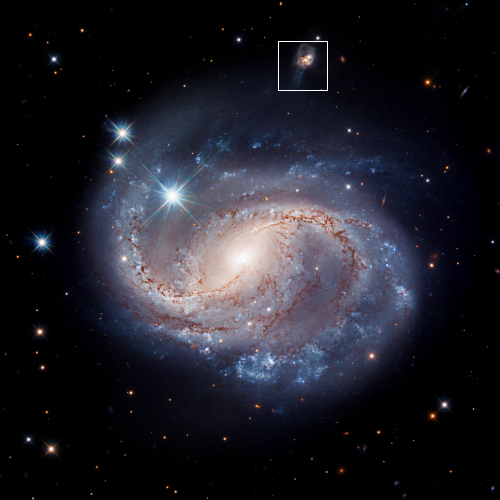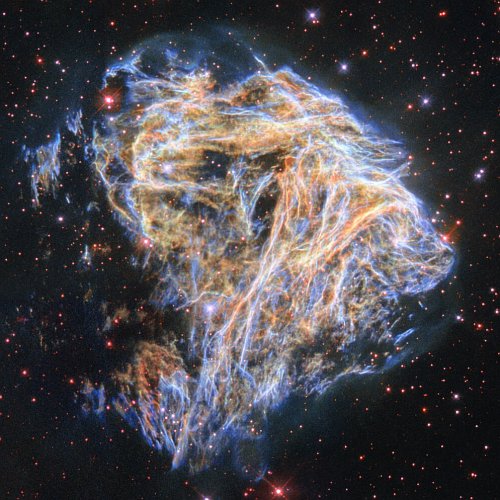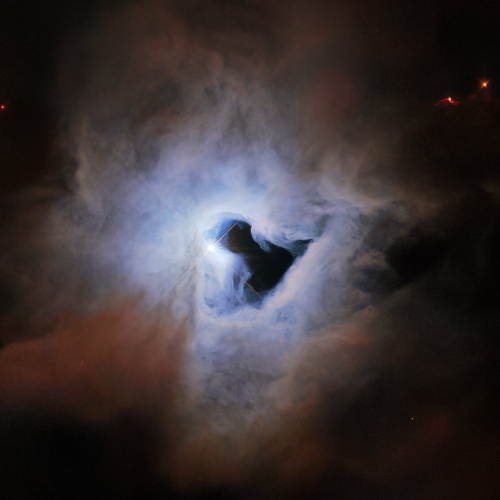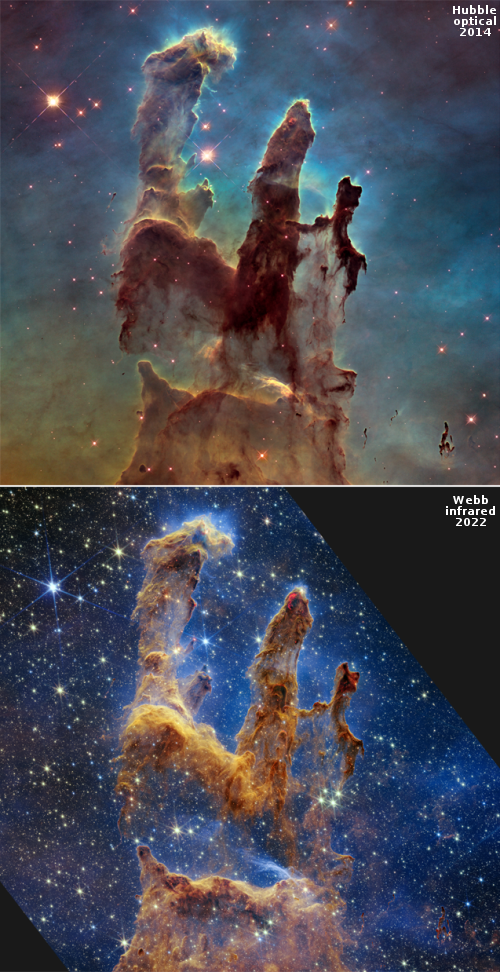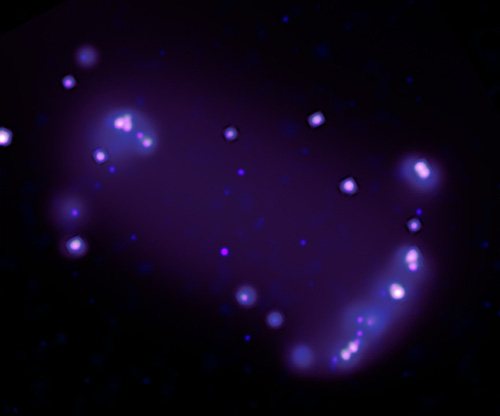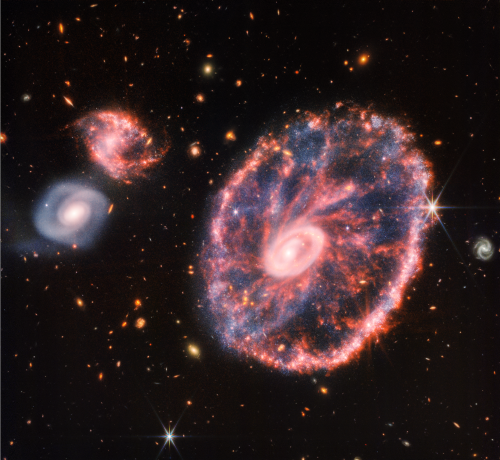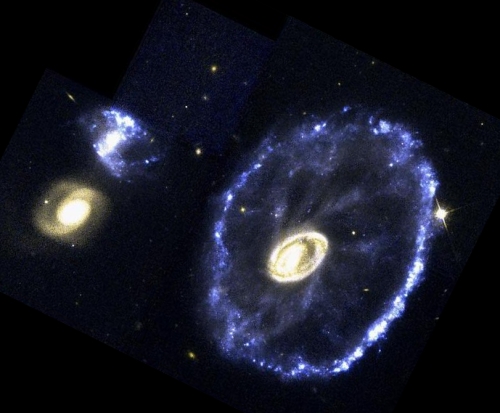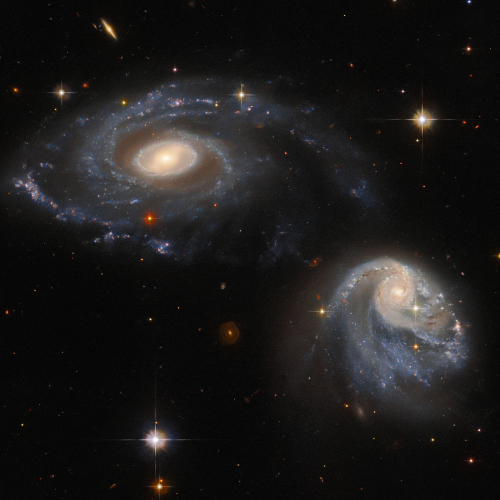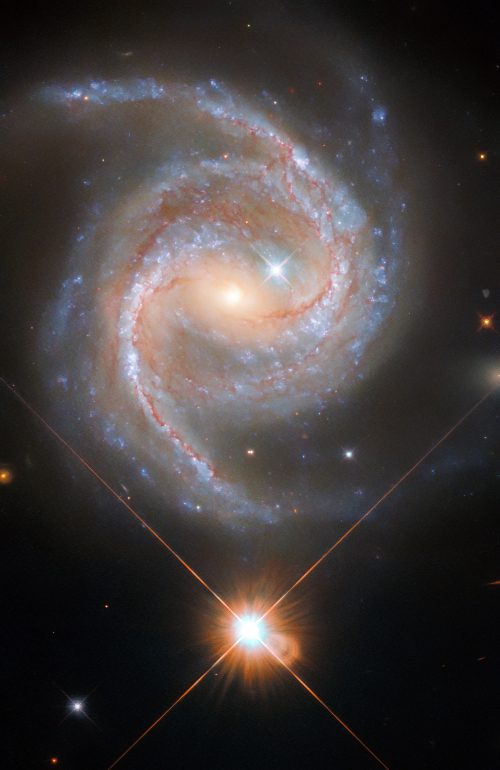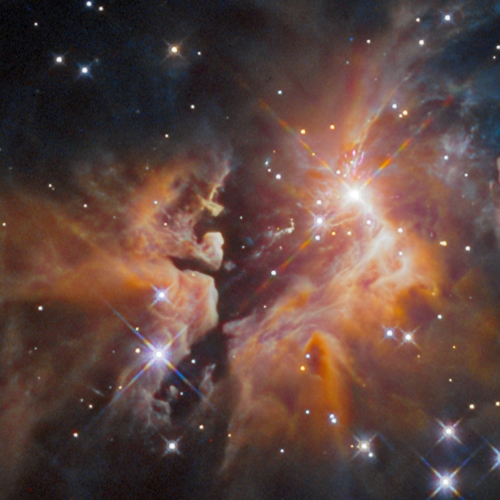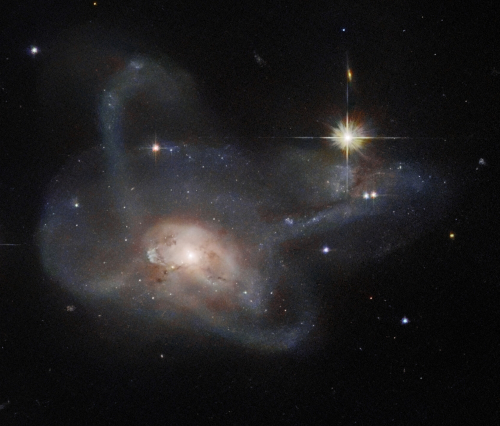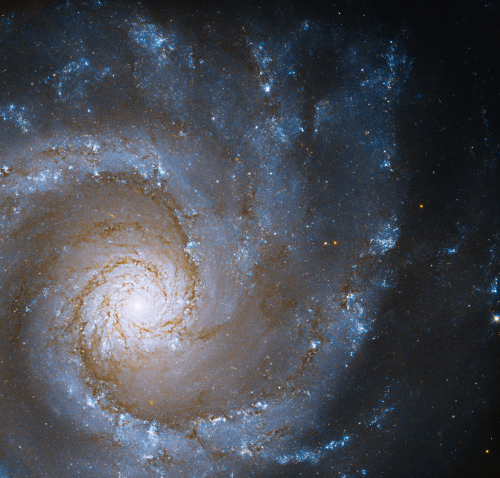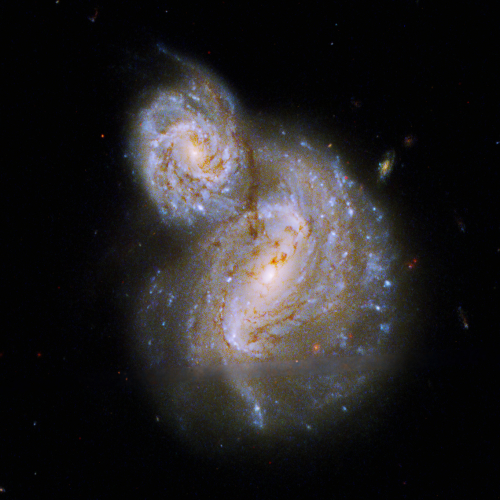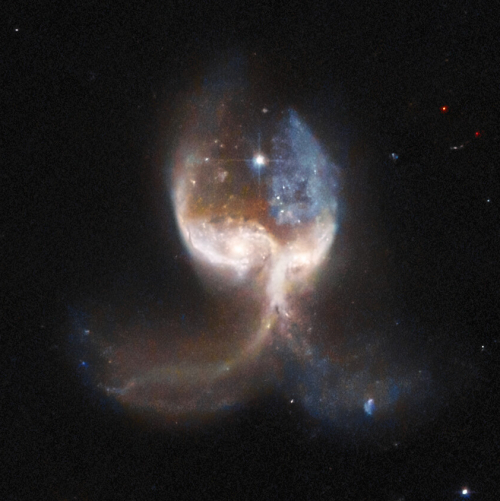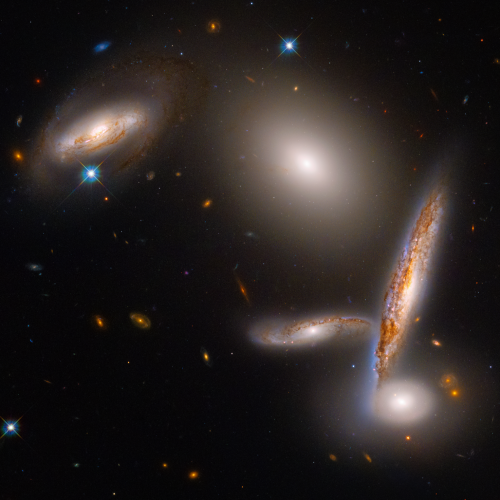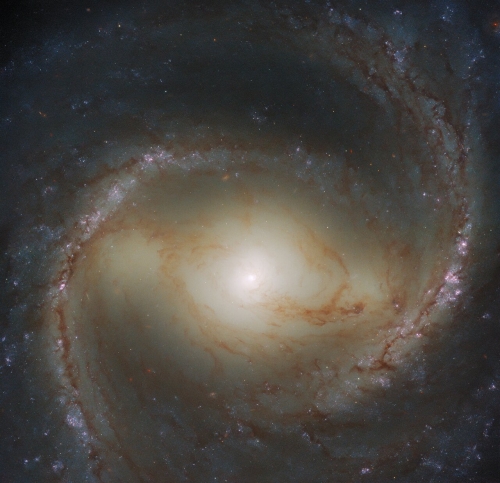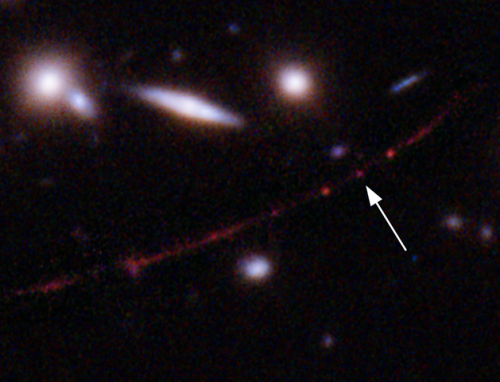A barred spiral galaxy with distorted galaxy
Cool image time! The photo to the right, reduced and cropped to post here, was taken by the Hubble Space Telescope and shows a barred spiral galaxy about 214 million light years away.
Scientists used NASA’s Hubble Space Telescope to image NGC 6956 to study its Cepheid variable stars, which are stars that brighten and dim at regular periods. Since the period of Cepheid variable stars is a function of their brightness, scientists can measure how bright these stars appear from Earth and compare it to their actual brightness to calculate their distance. As a result, these stars are extremely useful in determining the distance of cosmic objects, which is one of the hardest pieces of information to measure for extragalactic objects.
The press release of course focuses on this magnificent barred spiral. I however want to draw your attention to the smaller galaxy in the white box.
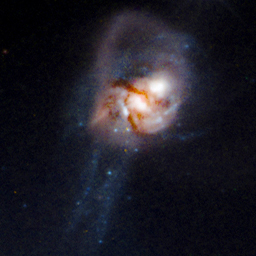
Since we do not know the distance to this distorted galaxy, we do not know if its distortion is caused by the barred spiral. It could be the bigger galaxy’s gravity is pulling material away.
More likely, based on the shape of this smaller galaxy, is that it is many light years farther away — which is why it looks so much smaller — and has been distorted because it is actually a collusion of two galaxies. The two bright nuclei with the red dust between strongly suggests such a collusion.
I highlight this background galaxy because it illustrates the importance when looking at any Hubble image to look at everything. To coin a phrase, there is gold in them thar hills, if you make the effort to look.
Cool image time! The photo to the right, reduced and cropped to post here, was taken by the Hubble Space Telescope and shows a barred spiral galaxy about 214 million light years away.
Scientists used NASA’s Hubble Space Telescope to image NGC 6956 to study its Cepheid variable stars, which are stars that brighten and dim at regular periods. Since the period of Cepheid variable stars is a function of their brightness, scientists can measure how bright these stars appear from Earth and compare it to their actual brightness to calculate their distance. As a result, these stars are extremely useful in determining the distance of cosmic objects, which is one of the hardest pieces of information to measure for extragalactic objects.
The press release of course focuses on this magnificent barred spiral. I however want to draw your attention to the smaller galaxy in the white box.

Since we do not know the distance to this distorted galaxy, we do not know if its distortion is caused by the barred spiral. It could be the bigger galaxy’s gravity is pulling material away.
More likely, based on the shape of this smaller galaxy, is that it is many light years farther away — which is why it looks so much smaller — and has been distorted because it is actually a collusion of two galaxies. The two bright nuclei with the red dust between strongly suggests such a collusion.
I highlight this background galaxy because it illustrates the importance when looking at any Hubble image to look at everything. To coin a phrase, there is gold in them thar hills, if you make the effort to look.

